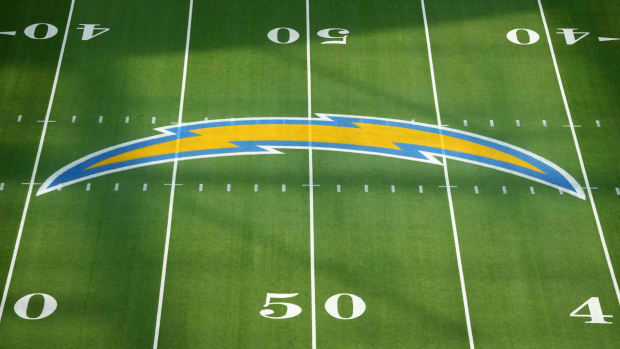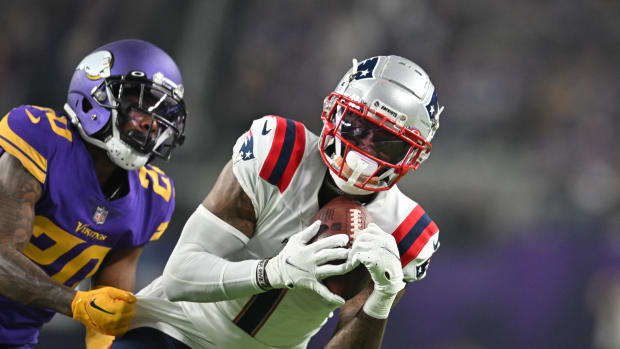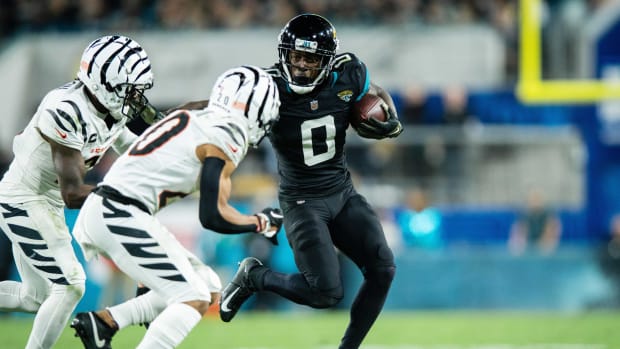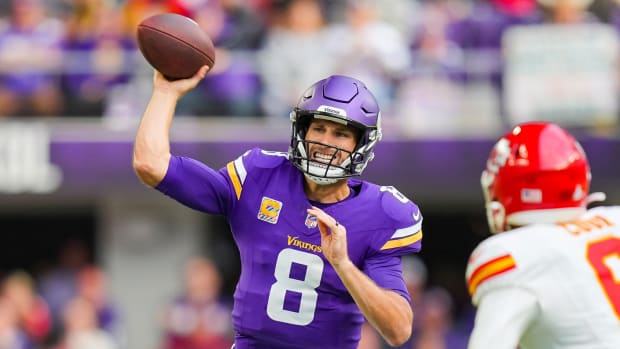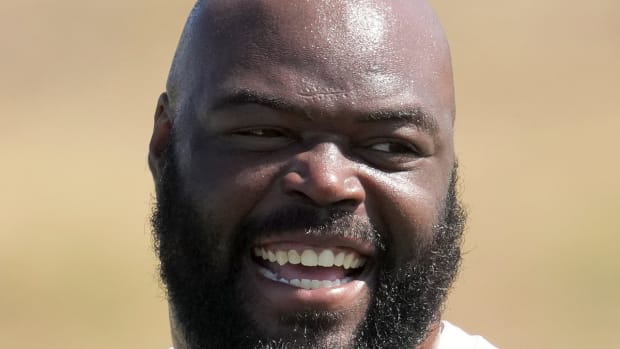Who Doesn’t Like a Tie?
The critics are back again, and in the predictable full-throated uproar. It came a little early this year, but as it turns out, this is the week where the lonely NFL tie is dismissed as an anachronism and comes under assault from the fix-everything-now crowd who want it banished.
Because heaven forbid an NFL fan or player would have to suffer the indignity of non-resolution ever again.
Put down the pitchforks, people, and let’s talk about the faux problem. One tie a year in the NFL is all it takes to spark this annual debate, so let’s take it from the top and try to remember how we got here.
Naturally, Brett Favre was involved. In the hard-fought 2009 NFC Championship Game in New Orleans, Favre’s Vikings didn’t get the ball in overtime because the Saints took the opening kickoff and drove for the game-winning field goal. That was the tipping point for the fairness police to get involved, with the league prompted to change its overtime rules and give each team at least one possession in the extra period, providing there was no first-possession touchdown scored.
And there was much rejoicing. Until, you know, the ties started happening. (And Peyton Manning figured out that the coin flip still really matters if your defense can’t keep the other team out of the end zone. But we digress).
There were no ties in 2010 or 2011 under the new OT format. But the Rams and 49ers tied in 2012. And the Vikings and Packers followed suit in 2013. And now, lo and behold, the Panthers and Bengals have defied the laws of football probability and made it three ties in three years, deadlocking at 37-37 last Sunday in Cincinnati.
Now on The MMQB
Irving Fryar turned his life around during his 17-year NFL career. Now his uplifting redemption story takes a troubling twist. FULL STORY Andy Benoit’s Week 7 Deep Dive asks, Who’s tougher to game-plan for, Manning or Kaepernick? FULL STORY The Bears’ Charles Tillman opens up about his injury, his future and his toughest opponent. FULL STORY Trouble in the Trenches: A new concussion study supports the idea that multiple lesser impacts, like those that linemen endure, are the greatest danger. FULL STORY
It’s the first time the NFL has endured a tie in three consecutive seasons since 1987-89. Oh, the humanity.
The handwringing started almost immediately, as did the drumbeat for the play-until-you-declare-a-winner mind-set. The instant-gratification lobby is now demanding the “flawed’’ overtime rules be “fixed’’ again. If you can play until you drop in the playoffs, why not adopt the same approach in the regular season? This is America, and our sacred love of sports demands we have winners to celebrate and losers to castigate. Nothing in between. None of this half-loaf, unsatisfying middle ground will do. After all, Herm Edwards never said: “You play to tie the game.’’
But it’s all just nonsense, and our inability to ever realize when enough’s enough. The current overtime system works just fine, and let’s not forget that if the Bengals’ Mike Nugent makes a chip-shot 36-yard field goal at the conclusion of overtime, they’d be no problems or fixes to discuss this week. So, is that really the fault of the overtime format, or more an issue with Cincinnati’s kicking situation we’re talking about here? Nugent (pictured above after his miss) is just 11 of 17 this season on field goals this season, so we may have all missed the point.
And then there’s the most important reason why five full quarter of football has been deemed sufficient for any given regular-season game. Two words: Player safety. You might have heard of it. It’s been in all the papers.
In an era of football where the health of the players is said to be paramount—and I stress “said”—playing past five quarters, even only once in a great while, is beyond shortsighted and counterproductive to the health of the game. For the greater good, we can all live with one tie a season and still somehow figure out the standings. It didn’t seem to de-legitimize the 2012 or 2013 Super Bowl race to have a tie mixed into the equation. It actually spiced things up a bit.
Here’s a good rule to live by, in sports and otherwise: Everything in moderation. Including NFL ties. They may be different and quirky, but ties can be interesting, and add a little intrigue to football’s pennant races. I like a little variety and messiness in my NFL standings, and why even put that right column all the way over there if you’re not going to use it for anything other than a string of zeroes?
I’ll grant you that ties might not feel remotely fulfilling enough to the fans or players at the moment, but they can be vitally important in the span of time. At 8-7-1 last season, the Packers held off the second-place Bears (8-8) and won the NFC North thanks to that 26-26 tie with Minnesota in Week 12. Same story in 2012, when the 11-4-1 49ers took the NFC West over 11-5 Seattle, on the strength of their 24-24 Week 10 tie with St. Louis.
The hubbub over ties began with Brett Favre, because of course. (John Biever/SI/The MMQB)
In fact, and I hope you’re paying attention Bengals and Panthers fans, the last five ties in the NFL have all involved at least one team that went on to make the playoffs that season. The 2008 Eagles and 2002 Falcons both earned wild-card berths by the half-game advantage gained in going 9-6-1 rather than 9-7, making it four straight times that an ugly tie wound up looking pretty good in the final analysis. So ties aren’t a waste of time. But arguing about their validity is.
And thanks to there being ties in the NFL, we can now add Panthers rookie receiver Kelvin Benjamin to that entertaining and growing pantheon of players who admitted they didn’t know there were ties in the NFL. Kelvin, meet Donovan McNabb, Dashon Goldson and Danny Amendola, all of whom have walked in your shoes in recent years. Feel free to discuss what you’ve learned.
• PETER KING’S MAILBAG: OT rules, Watt’s MVP run, Snoop Dogg's Steelers and more
The fear, of course, in the anti-tie movement is that it’s only mid-October and there’s still time this season for another tie, and who knows how loud the outcry for change will get if the NFL has to experience its first multiple-tie season since 1997? Shudder.
Strangely enough, until the Panthers-Bengals draw, the past seven ties in the league all had occurred in November, specifically the two weeks between Nov. 10 and Nov. 24. So brace yourselves for that, NFL fans. The league’s tie season is still roughly a month away, meaning we might have another round of this silly debate.
Until then, nothing to see here, move along. Find some other football problem to fix. The NFL’s tie needs no adjusting.
[widget widget_name="SI Newsletter Widget”]



































